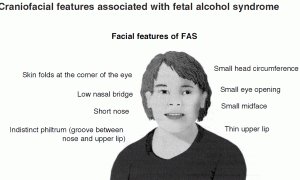
You probably had a friend in high school that suffered from asthma. Chances are that you remember them puffing on one of those weird little devices with the aerosol can tucked into a plastic L-shaped tube.
Most of us are roughly familiar with asthma. We know that it’s a condition that causes trouble breathing, and that those inhaler devices can help to combat the symptoms when an asthma sufferer is having trouble catching a breath. Here, we simply hope to bring you up to speed so that you won’t just be roughly aware of the condition, but rather, you’ll have a working knowledge of it.
What is Asthma?
Asthma is defined as a chronic inflammatory disease of the airways. You’ve probably dealt with a stuffy nose that wasn’t full of mucus, it was just… stuffy. Swollen, inflamed, etc. When you’ve had trouble breathing through your nose because of swelling and inflammation, rather than mucus, you’ve experienced a feeling that isn’t far off of what asthma often feels like. In other words, it’s inflammation, not mucus or a muscular deficiency (as in some forms of sleep apnea).
Asthma Symptoms
Asthma can be identified by its symptoms:
-
Shortness of breath
-
Wheezing and coughing
-
Tightness in the chest
-
Suptum after coughing
Suptum may appear pus-like after a serious asthma attack. Any one of these conditions can appear on its own or together with others without necessarily pointing to asthma. You will need to speak with your physician if you worry that you may be suffering from the condition.
Associated conditions may include anxiety, mood disorders, obstructive sleep apnea and reflux conditions.
What Causes Asthma?
The causes of asthma are complex, wide-ranged and not fully understood as of yet. We can’t give you the full story on what causes asthma, because we’re just plain not quite sure yet.
Genetics seem to play a major role in the development of asthma, but so do living conditions. Shifting from, say, an urban environment to a rural environment may trigger asthma. It may be linked to certain viruses, like the rhinovirus, or respiratory syncytial virus. It has also been shown that caesarean section births may increase the risk of a child developing asthma.
Asthma is simply very difficult to track, and there are a number of hypotheses, some of them at odds with others, as to exactly what does and does not cause the condition. Fortunately, treatment of asthma is rarely as confusing and problematic as seeking out the root causes of the disease.
Treating Asthma
Dealing with asthma, or “managing” the condition is, fortunately, not as difficult as with many other diseases and medical conditions. You probably won’t have to take forty or fifty pills a day because of your asthma condition, you probably won’t have to go to see the doctor anymore than you might for, say, a recurring knee injury.
Your physician will come up with a treatment plan specifically designed to suit your needs and your condition, and from there, it’s simply a matter of following it, and talking with your doctor to make adjustments now and then.
“Short term” control helps to deal with asthma symptoms immediately. If you are having trouble breathing, you take a puff off of your inhaler for a burst of a “SABA”, like salbutamol. You generally want to take your SABA right before exercise, as well.
An anticholinergic like ipratropium bromide may be used in addition to your SABA treatment.
For longer term solutions, you have LABA, or Long Acting Beta-Adrenoceptor Agents, and leukotriene antagonists, like montelukast.
If this looks like we’re writing in another language right now, don’t worry. If you need to know precisely what any of this stuff is, your doctor will walk you through it. For now, the bottom line is that these meds help to stabilize breathing and open up airways, typically by administration through an inhaler.
About half of all asthma sufferers use some form of alternative therapy, with varying degrees of success. Alternative therapy isn’t necessarily wrong, useless or dangerous, it’s simply untested in a medical, scientific sense. Some alternative therapies are harmless, some are dangerous, some may even be useful, but none of them have the assurance of any accredited and government-licensed medical organization.
Asthma has killed around a quarter million people, on the record, but the prognosis for the disease is generally good. It’s a relatively easy condition to manage, and the technology is improving every day. Living with asthma can be a hassle, but given proper treatment and care, it needn’t be dangerous.
Learn More About Asthma
If you want to expand your knowledge about asthma, following are a few great resources to get you started.
1) Asthma – Centers of Disease Control and Prevention
2) Asthma – United States Environmental Protection Agency:
3) Asthma Society of Canada
4) Asthma.com – Know More, Do More
Have you or a loved one faced asthma? Share your experience and tips with us in the comments.



Leave a comment
You must login or register to add a new comment.